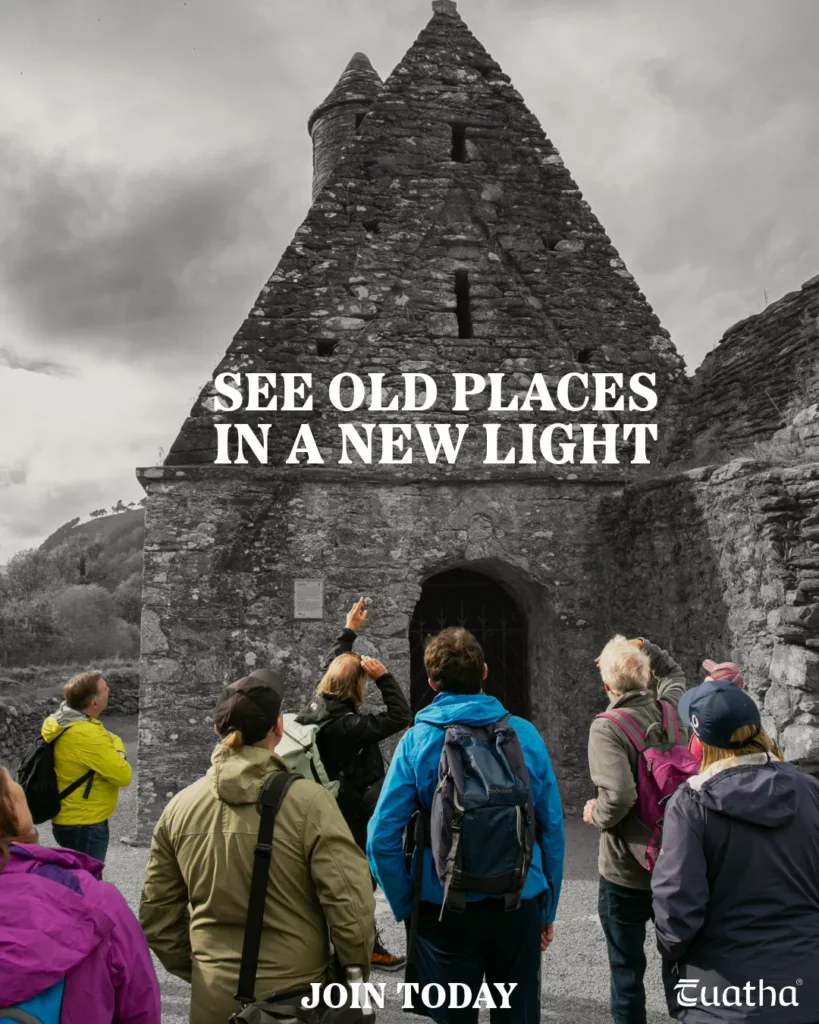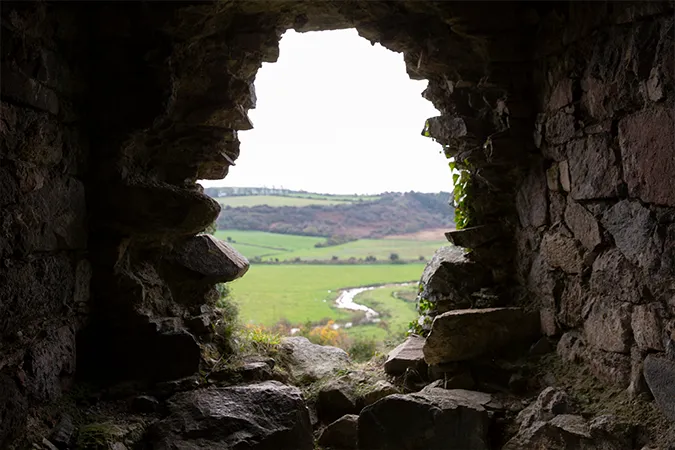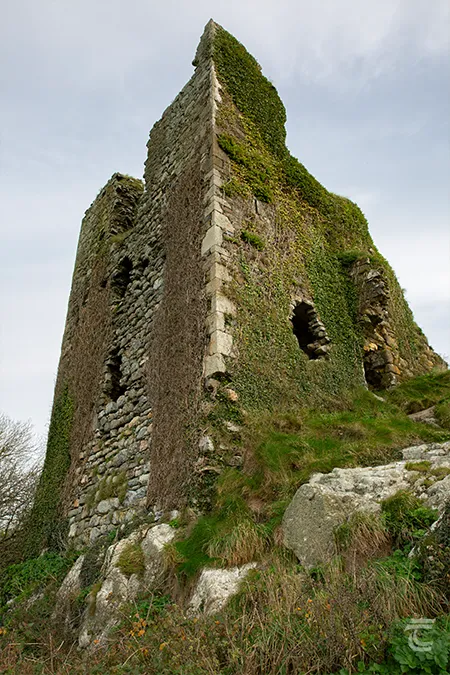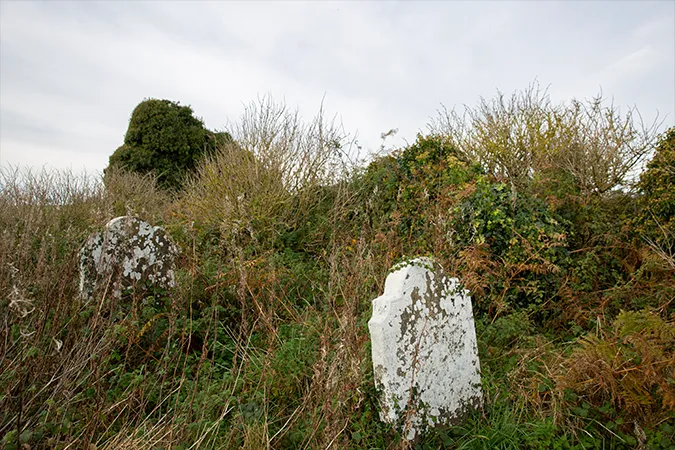Dunhill Castle
Dunhill Castle is believed to have been established by the La Poer family, with it typically being attributed to the Norman knight, Robert le Poer in AD 1200. Le Poer (whose descendants became known as the Power family), demonstrated his connections when he served as the best man at the wedding of Aoife and Richard de Clare (Strongbow), the leader of the Normans in Ireland. Those connections, and his talents, allowed Le Poer to arise to the rank of Baron of Dunhill and Marshal of Waterford. Dunhill takes its name from the Irish ‘Dún Áil’, meaning the ‘Fort on the Cliff’, a perfectly descriptive name for this castle that is positioned on a prominent ridge that dominates the Anne Valley. The dún part of the placename may provide a tantalising hint that this hilltop once had an older fortification before the castle was constructed. If so, it can be no surprise as it is such a strategic location, overlooking the point where the Annestown Stream once entered the sea. The castle that we see today was built by the descendants of Le Poer in the form of a stone tower house with a ground floor entry, with a large vault under the main door. It had at least one garderobe (a medieval toilet), and a spiral staircase led to the upper levels. The tower was surrounded by a bawn wall, though only traces of that survive today.
For practical information about visiting this site Click Here
Dunhill Castle is believed to have been established by the La Poer family, with it typically being attributed to the Norman knight, Robert le Poer in AD 1200. Le Poer (whose descendants became known as the Power family), demonstrated his connections when he served as the best man at the wedding of Aoife and Richard de Clare (Strongbow), the leader of the Normans in Ireland. Those connections, and his talents, allowed Le Poer to arise to the rank of Baron of Dunhill and Marshal of Waterford. Dunhill takes its name from the Irish ‘Dún Áil’, meaning the ‘Fort on the Cliff’, a perfectly descriptive name for this castle that is positioned on a prominent ridge that dominates the Anne Valley.
The dún part of the placename may provide a tantalising hint that this hilltop once had an older fortification before the castle was constructed. If so, it can be no surprise as it is such a strategic location, overlooking the point where the Annestown Stream once entered the sea. The castle that we see today was built by the descendants of Le Poer in the form of a stone tower house with a ground floor entry, with a large vault under the main door. It had at least one garderobe (a medieval toilet), and a spiral staircase led to the upper levels. The tower was surrounded by a bawn wall, though only traces of that survive today.
For practical information about visiting this site Click Here
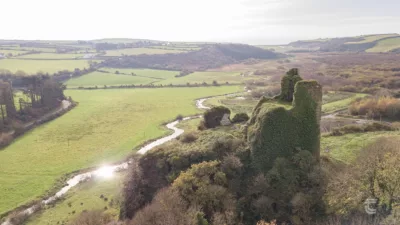
Aerial view of Dunhill Castle and the Anne Valley • Waterford
The Siege of Dunhill Castle
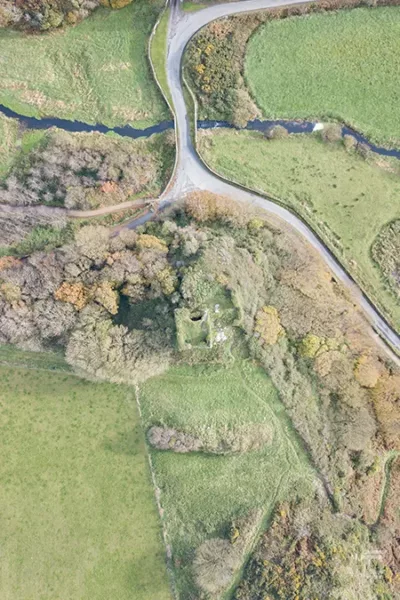
Plan view of Dunhill Castle from the air • Waterford
The castle was ‘slighted’ by Cromwell’s forces in the 17th century. A story in the National Folklore Collection tells that at the time the owner of the castle was John Le Poer Baron of Dunhill and Lord of Kilmeaden. John Le Poer was besieged and eventually defeated at Kilmeaden Castle, while his wife Countess Giles was surrounded by Cromwell’s forces here at Dunhill Castle.
The redoubtable Countess Giles held the fort with the help of an excellent gunner, who fired a cannon from the top of the tower. His accuracy pushed the Cromwellian army back. As they retreated, Countess Giles climbed the tower to thank the gunner and offer him a drink. The man demanded ale, but the Countess only had buttermilk. The gunner was so insulted, that he refused to fire the cannon and even ordered one of his men to signal the surrender. The Cromwellian forces flooded into the castle and took their revenge for their earlier losses, by slaughtering all inside, including Countess Giles.
After the defeat, Cromwell’s forces stayed in Dunhill Castle for a year using it as a launch pad to attack other areas. When they left in 1650 Cromwell had his men use gunpowder to slight the castle, to forever ensure that it could never be an obstacle again. The fragmentary ruins of a medieval church and historic graveyard are located on a slope across from the castle. This was once the parish church, and it is thought to date to the 14th century. According to local tradition, the church was destroyed by Cromwell’s forces after the castle fell. The church is surrounded by a graveyard with a number of historic gravestones, many dating between 1753– 1821.
Today Dunhill Castle is a centrepiece along the lovely Anne Valley Walk. Established by the local community, the walk stretches from the village of Dunhill to Annestown Beach, and it is full of history and wildlife. The broader Anne Valley itself has a wealth of monuments, including a remarkable concentration of Neolithic portal tombs. You can discover them all on our Anne Valley Itinerary, exclusively available for Tuatha Members.

Plan view of Dunhill Castle from the air • Waterford
Upper left: the Anne Valley viewed through the shattered wall of the castle • Lower left: the historic graveyard and ruined church • Right: Dunhill Castle
Top: the Anne Valley viewed through the shattered wall of the castle • Middle: Dunhill Castle • Bottom: the historic graveyard and ruined church
